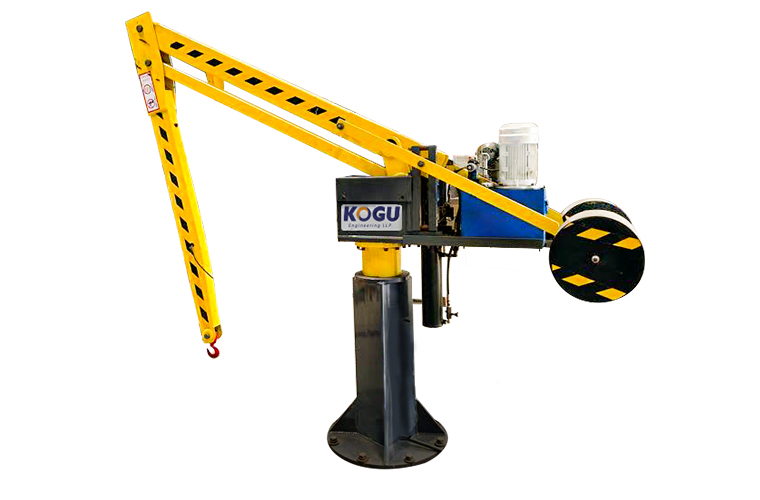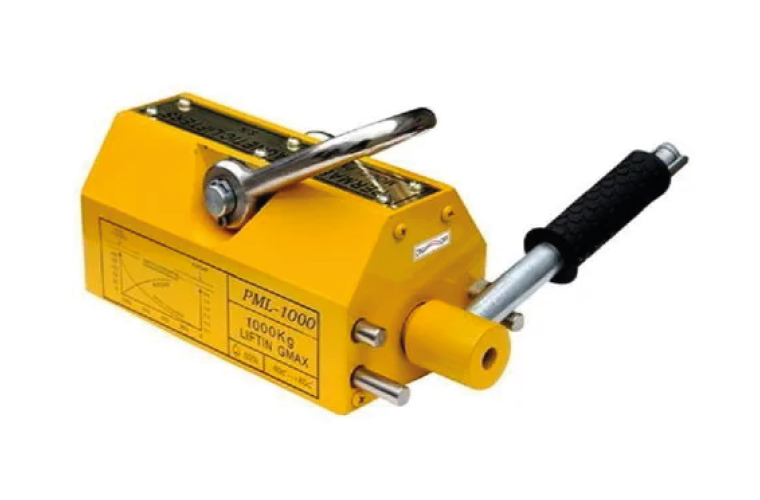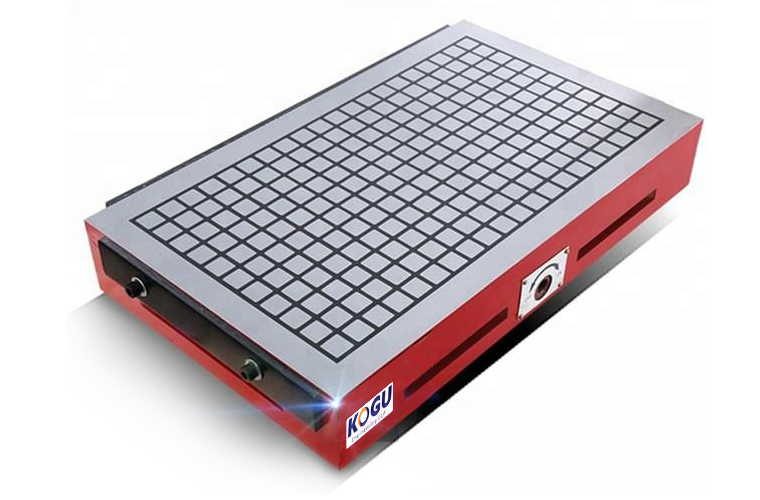
Hydraulic Mobility Crane In Delhi
Explore our premium range of hydraulic mobility cranes designed for efficiency and reliability. Based in Delhi, our supplier offers state-of-the-art cranes suitable for diverse lifting needs. Experience superior performance and durability with our top-notch hydraulic mobility crane supplier in delhi. Contact us today to discover the perfect crane solution for your requirements.
| Specification | |
|---|---|
| Rotating Angle | 350° |
| Load Bearing | 300/500/1000kg |
| Max Radius | 3.5 m |
| Folding Height | 3.45 m |
| Lifting Mode | Hydraulic |
| Lifting Speed | 5.5(m/min) |
| Lifting Altitude | 0.2.9 m |
Whether you’re looking for H.O.T. Cranes / E.O.T. Cranes, Mobile Crane, Hydraulic Mobile Floor Crane etc, you can have a look and find the best products from KOGU ENGINEERING LLP. We provides a Hydraulic Mobility Crane, also known as a Mobile Hydraulic Crane, is a type of heavy equipment is basically used for loading, unloading, moving, lifting, shifting and erecting heavy material in various industries, including construction, manufacturing, shipping, and more. We manufacture high quality products using the best raw materials and design to offer ease of operation. It’s designed to be mobile, allowing it to be transported to different places easily. The crane’s mobility is achieved through a combination of wheels or tracks, a self-propelled system, and hydraulically operated components. We offer a wide range of Hydraulic Mobile Crane selections in various locations across India. Our main manufacturing industry is in New Delhi.
Key features of a Hydraulic Mobility Crane include:
1. Hydraulic System: These cranes utilize hydraulic systems to operate various functions, such as lifting, lowering, extending, and rotating the boom. Hydraulic systems use pressurized fluid to transmit force and control the movements of the crane’s components.
2. Telescopic Boom: The most recognizable part of a hydraulic mobility crane is the telescopic boom, which can extend and retract. The boom’s length determines the crane’s lifting capacity and working radius. Longer booms can reach higher and farther.
3. Outriggers or Stabilizers: To ensure stability during lifting operations, most mobile hydraulic cranes are equipped with outriggers or stabilizers. These extendable legs or supports are deployed to provide a broader base and prevent the crane from tipping over.
4. Lifting Capacity: Hydraulic mobility cranes come in various sizes with different lifting capacities. The lifting capacity is influenced by factors such as the boom length, counterweight, and the crane’s overall design.
5. Operator’s Cabin: A cabin or control station is usually located on the crane itself, allowing the operator to have a clear view of the lifting operations and control the crane’s movements. Some modern cranes also offer remote control capabilities.
6. Counterweights: To maintain stability while lifting heavy loads, mobile hydraulic cranes are often equipped with counterweights. These weights balance the load being lifted and prevent the crane from tipping over due to an unbalanced load.
7. Mobility: The crane is mounted on a set of wheels or tracks, allowing it to move around the job site or between different sites. Some cranes are self-propelled, while others might need to be transported on flatbed trucks.
8. Applications: Hydraulic mobility cranes are used for a wide range of tasks, including lifting and moving construction materials, placing heavy equipment, loading and unloading cargo from ships, erecting structural components, and more.
9. Safety Features: Modern hydraulic mobility cranes are equipped with various safety features, including load monitoring systems, anti-tip technology, emergency shut-off controls, and more to ensure safe operations.
Key Features of Hydraulic Jib Crane and Single Arm Crane
1. Hydraulic System: Hydraulic jib cranes use a powerful hydraulic system to lift and move heavy loads. This system makes the crane easy to control and ensures smooth operation.
2. Rotating Arm: Both cranes have flexible arms. Hydraulic jib cranes can rotate 360 degrees, while single arm cranes are great for simple lifting tasks.
3. Compact Design: Hydraulic jib cranes save space and fit well in small work areas.Single arm cranes are lightweight and ideal for tight spaces like workshops.
4. Load Capacity: Hydraulic jib cranes handle heavy loads, while single arm cranes are better for lighter lifting needs. Both cranes are designed to suit different jobs.
5. Durable Build: These cranes are made with strong materials, so they last long and perform well, even in tough conditions.
6. Easy to Use: Hydraulic jib cranes have precise controls for heavy lifting, while single arm cranes are simple and quick to operate.
7. Versatile Applications: Hydraulic jib cranes are used in factories, warehouses, and construction sites.Single arm cranes work well in workshops and smaller projects.
It’s important to note that while hydraulic mobility cranes offer versatility and convenience, they require trained and skilled operators to ensure safe and efficient operation. These cranes come in different sizes and configurations, each suited to specific tasks and job site requirements.


